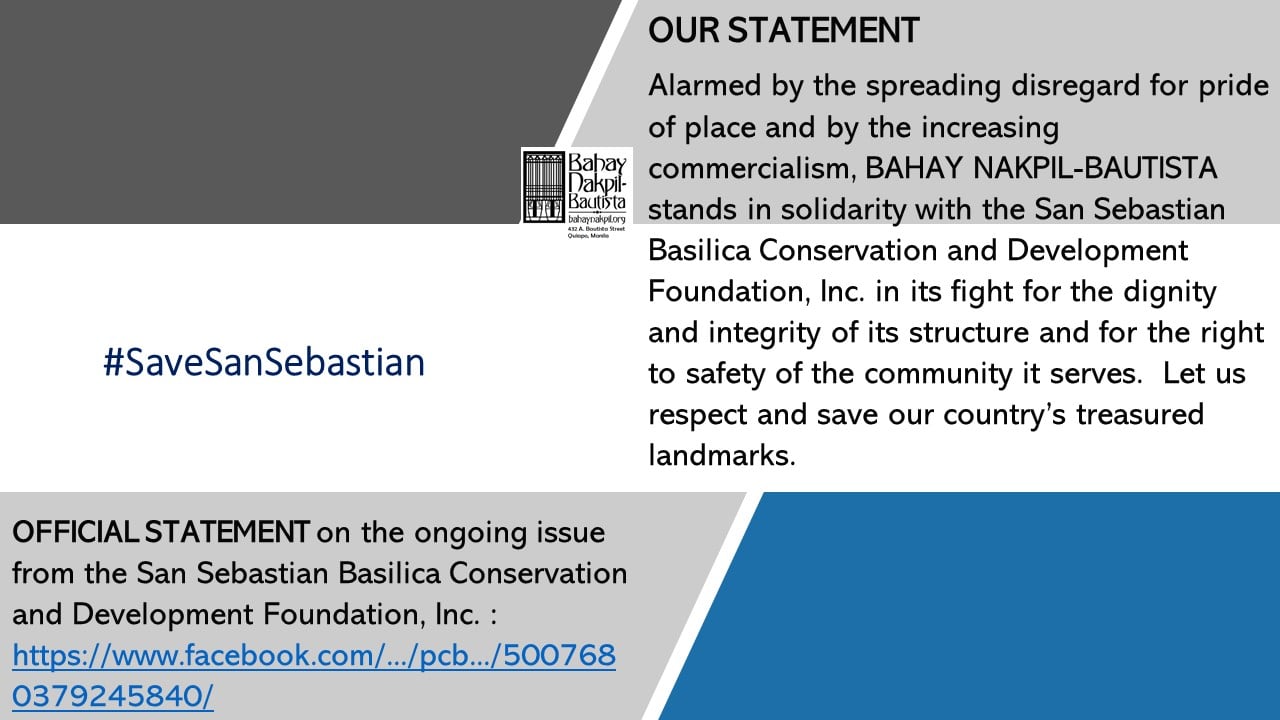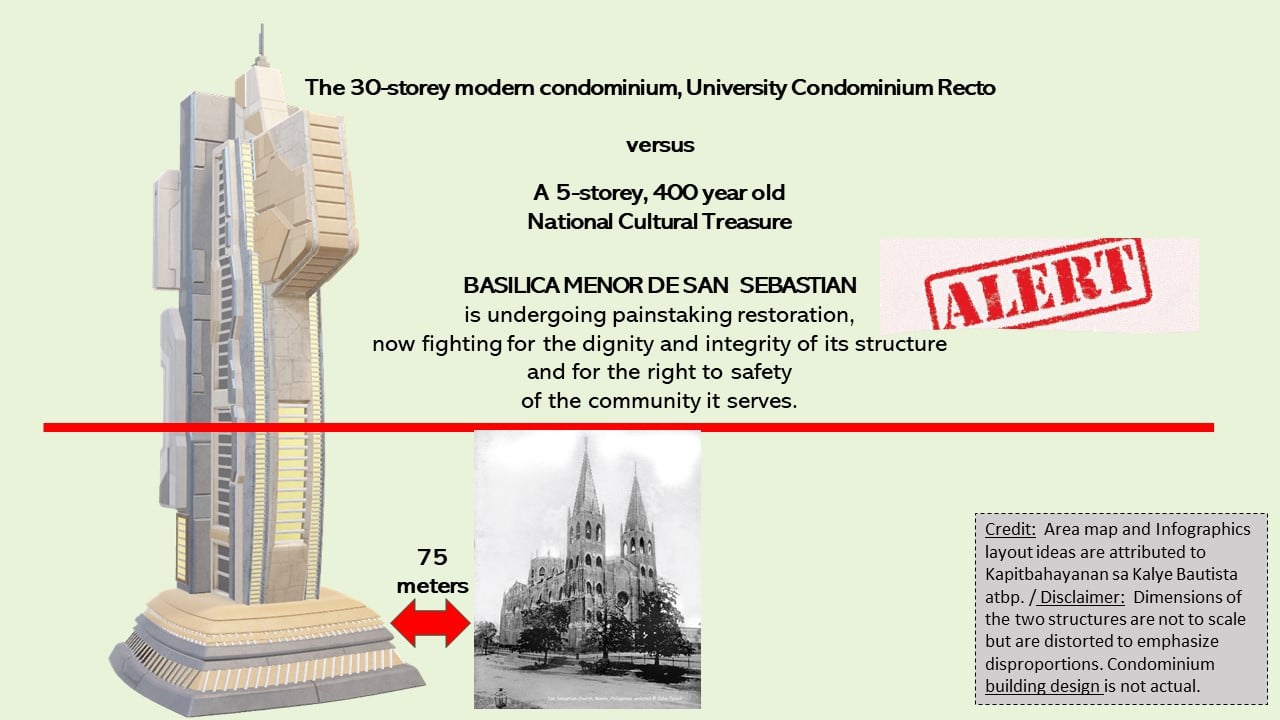PAMANA SERIES 2020 : Development or Decimation?
There is now a trend to buy old important historical houses around the barangays in Quiapo and replace them with commercial buildings. Another trend is to build condominium towers over 20 storeys high. Several such houses are up for sale or have been sold, more towers are being planned. With this slow decimation, instead of a rebirth and renewal, historic Quiapo is losing its soul.

In a very narrow street in Quiapo, Calle San Sebastian, a 30-storey condominium, University Home Recto, has started construction. It is only approximately 75 meters away (229 feet) behind the Minor Basilica of San Sebastian popularly known as San Sebastian Church.
Contrary to the claims of the builder, there was absolutely no consultation with the Recollect Fathers who own and run the Basilica and the College of San Sebastian and with the surrounding community. This construction could pose a serious threat to the structural integrity of the Basilica whose restoration has begun after several years of careful study of its structure by experts. Like much of Quiapo, which down to the 19th century, consisted of islands connected by esteros to the Pasig River, San Sebastian stands on a ground with a muddy subsoil. Indeed the winding shape of Calle San Sebastian indicates that it was an estero down to the 19th century that was filled up. And now a deep pit for a 30-storey tower will be dug just 75 meters behind the Basilica. This can affect the stability of the ground where the Basilica and surrounding houses stand. Has the builder produced any document that will show that the construction of the condominium will not affect the stability of the surrounding buildings?

There are warning signs that, because of the unstable ground on which Quiapo and part of Sampaloc district stands, towers can endanger their neighbors. (1) The late Manny Padilla, owner of the Padilla mansion at the corner of F.R. Hidalgo and Z. P de Guzman Streets, complained that ever since the Isabelle de Hidalgo Tower (around 15 storeys high) was built across Hidalgo Street, their water supply has dwindled. (2) On the other hand, an employee of the Nazarene Parochial School at F. R. Hidalgo Street says that ever since the Isabelle de Hidalgo Tower rose up, the water in their basement has collected and become a swimming pool. (3) Across Recto Avenue, La Gota de Leche has suffered cracks in its structure when a Tower was built by University of the East just across the street.
Here are threats facing, not only Quiapo, but many other neighborhoods in our cities today: (1) Deep multi-storey excavations that change ground water levels; (2) power and pile drilling whose strong vibrations could cause houses and structures to tilt; (3) back-and-forth movement of construction equipment on a narrow street; (4) dust clouds rising from demolitions; (5) construction debris of mixed materials that might cause fire; (6) 30-storey towers whose long shadows deny sunlight to their neighbors during much of the day; (7) increased traffic congestion and noise pollution on a narrow street when residents of the tower drive their cars.

Finally the presence of a 30-storey tower right behind the Basilica will torpedo its chances of being listed as a UNESCO World Heritage Site because UNESCO insists that a landmark should be appreciated with no obstructions surrounding it. All over the world, including the Philippines, inclusion in the UNESCO List has meant more prestige, more publicity and more tourism revenues both for the landmark and for its surrounding community. What a big loss for both the City of Manila and the Philippines.
